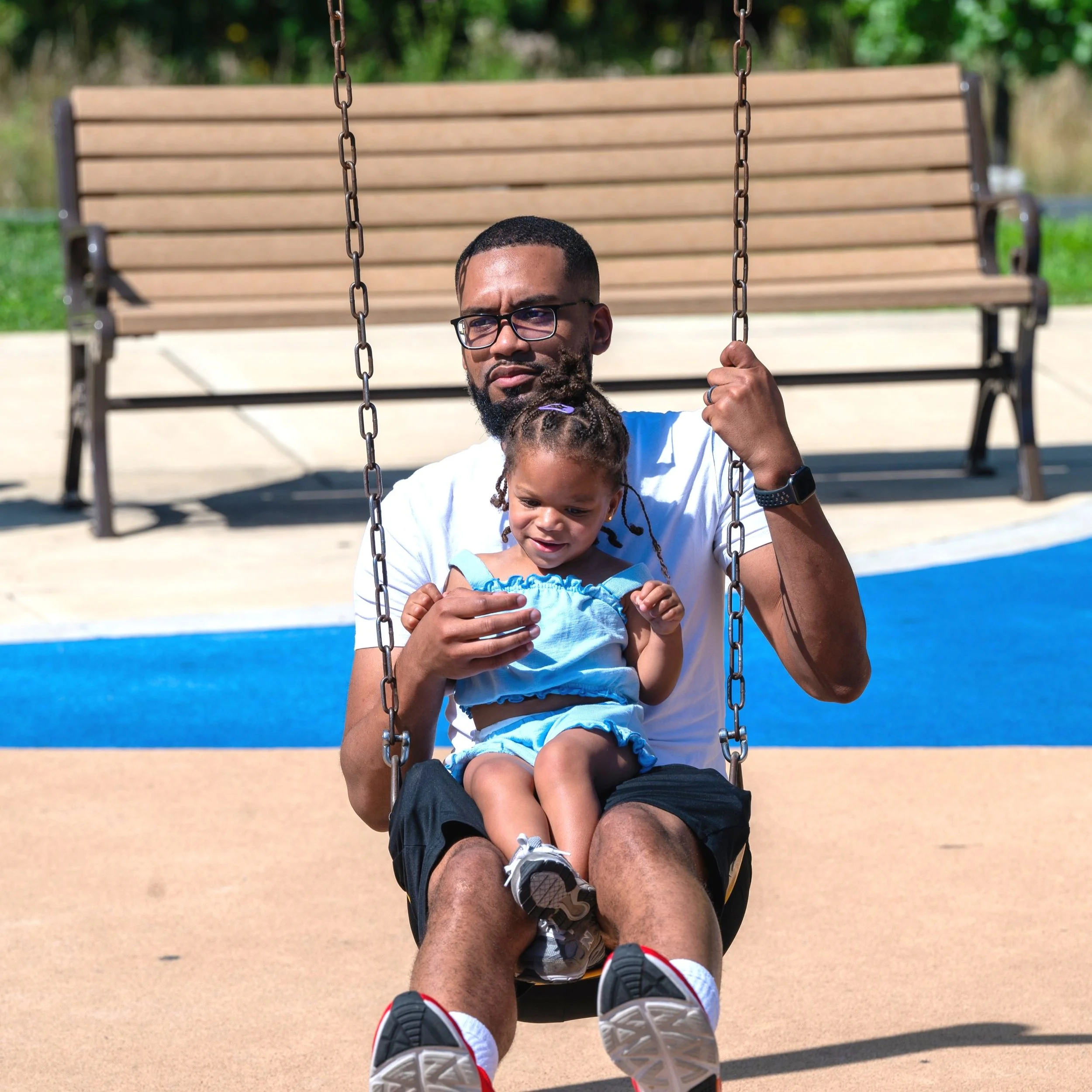What are inclusive playgrounds?
Inclusive playgrounds welcome everyone to participate.
Playgrounds in Maryland should be fully inclusive for all. That means everyone can learn and play together.
Inclusive playgrounds include an outdoor playground and all the nearby areas, like parking and bathrooms. Inclusive playgrounds help all members of the community feel like they belong. Fully inclusive playgrounds are physically, socially, and emotionally welcoming.
Inclusive playgrounds have four important characteristics:
They can be used by everyone (accessible);
They meet needs of different people (adaptive);
They encourage people to come together to play and learn (welcoming); and
They make people feel good when they are there (promote feelings of emotional well‑being).
There is a difference between inclusive playgrounds and accessible playgrounds. Accessible playgrounds are designed to meet the minimum standards of the requirements in the law. This means that everyone can access some part of the playground without a challenge. But accessibility does not mean that everyone can use the playground meaningfully. Inclusive playgrounds welcome any individual so they feel like they belong in all parts of the playground. Inclusion goes beyond accessibility because everyone can enjoy all parts of the playground without a challenge.
Here are some examples of the difference between an accessible playground and an inclusive playground.
EXAMPLE 1
A playground with pathways to and around the equipment that can be used by someone in a wheelchair is an accessible playground. But changes in ground type create a barrier that makes enjoying all parts of the playground not possible. For example, when the ground at a playground changes from concrete to mulch, the areas with mulch cannot be accessed by a person in a wheelchair.
An inclusive playground provides accessible ground material throughout the playground, such as poured in place rubber. This reduces surface changes for a person in a wheelchair.
EXAMPLE 2
A playground with adaptive swings and non-adaptive swings is an accessible playground. Adaptive swings are swings with a high back and harness that can support people with physical disabilities. They can also be swings that can support a person in a wheelchair. But if the adaptive swings are separated from other swings, this creates a barrier to enjoying all parts of the playground.
An inclusive playground would not separate the adaptive swings. Instead, an inclusive playground would have many types of adaptive and nonadaptive equipment located together. This allows everyone to feel welcome so they can play and learn together.
EXAMPLE 3
Inclusive playgrounds consider the needs of children and adults. When the needs of both children and adults are met, they are more likely to enjoy their time at the playground. For example, adults need places that are comfortable and accessible when visiting a playground. One of the easiest ways to do this is by making sure there is plenty of adult seating with tables available in the shade. This allows adults to enjoy the playground while kids are also enjoying playtime. Playgrounds can also offer equipment designed for all ages, encouraging all members of the community to play.






